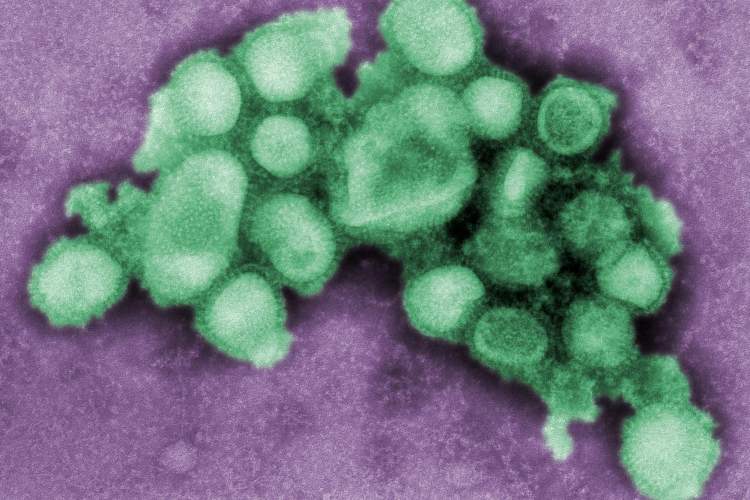
The resurgence of Influenza A (H1N1), commonly known as swine flu, in India has raised alarms across public health circles. With the monsoon season fuelling the spread of respiratory illnesses, the sharp increase in H1N1 cases, particularly in Maharashtra, Punjab, Kerala, and Gujarat, calls for an urgent examination of the factors contributing to this outbreak and measures needed to bring it under control.
H1N1 first gained global attention in 2009 when it triggered a pandemic that affected millions worldwide. Initial fears cantered on the possibility of the virus being transmitted through pork products, but a joint statement by the FAO, OIE, WHO, and WTO in May 2009 clarified that pork and pork products, handled according to good hygienic practices, were safe. The statement emphasised that there was no evidence of the virus being transmitted by food, and there was no justification for trade restrictions on pigs or pork products.
READ | AI regulation: Govt readying comprehensive set of standards for applications
However, the global health community remained vigilant. The FAO, WHO, and other organisations stressed the importance of monitoring pig herds for any signs of unusual illness that could be linked to human cases of H1N1. This early international response set the stage for ongoing surveillance and research into the virus’s behaviour, transmission, and impact on both animal and human health.
H1N1 threat persists
India has reported over 9,000 cases of H1N1 till July, with 178 deaths attributed to the virus. Punjab, Kerala, and Gujarat are the states with the highest number of fatalities, while Delhi, Gujarat, and Kerala have recorded the most cases. Maharashtra has witnessed a significant spike in H1N1 cases this year, with a 70% increase in cases compared with the previous year, leading to 30 deaths.
The resurgence of H1N1 in India during the monsoon season is particularly worrying due to the overlapping challenges posed by other respiratory illnesses, including the ongoing threat of COVID-19. The monsoon season, characterised by increased humidity and temperature fluctuations, creates an ideal environment for the spread of respiratory viruses, contributing to the surge in H1N1 cases.
Factors contributing to Swine flu outbreak
Several factors have contributed to the recent spike in H1N1 cases in India. The monsoon season is a known catalyst for respiratory infections, as the weather conditions favour the survival and transmission of viruses like H1N1. Additionally, reduced immunity levels in the population, possibly due to the focus on COVID-19 prevention, have made people more susceptible to other viral infections.
The possibility of mutations in the H1N1 virus, making it more transmissible or virulent, is also under consideration. A recent study in India highlighted the genetic characterisation of the H1N1 virus, revealing mutations that could potentially alter the virus’s behaviour and its ability to evade the immune system. These findings underscore the need for continuous genomic surveillance to monitor changes in the virus that could lead to future outbreaks.
Public health measures
In response to the escalating H1N1 situation, the Union and state governments have intensified public health efforts. Maharashtra, one of the most affected states, has ramped up its healthcare resources, including antiviral medications and respiratory support equipment, to manage the growing number of cases. Vaccination drive has been expanded, particularly targeting high-risk groups such as the elderly, pregnant women, and those with pre-existing health conditions.
Public awareness campaigns are being launched to educate people about the importance of vaccination, good hygiene practices, and early medical intervention. These campaigns are crucial in preventing further spread of the virus, especially in densely populated areas where transmission rates are higher.
The challenge of co-infection
The COVID-19 pandemic adds another layer of complexity to the management of H1N1. Co-infection with H1N1 and SARS-CoV-2, though currently minimal, poses a significant public health threat. A study conducted in India found a 0.78% co-infection rate among Influenza Like Illness (ILI) and Severe Acute Respiratory Infection (SARI) cases, with one reported death. This underscores the importance of early detection and treatment of co-infected individuals to prevent severe outcomes.
The genetic analysis of H1N1 and SARS-CoV-2 co-infections revealed mutations that could potentially enhance the viruses’ ability to evade the immune system, leading to more severe disease and increased transmission. Continuous genomic surveillance is essential to monitor these mutations and their impact on public health.
The way ahead
To control the spread of H1N1 in India, a multi-pronged approach is required. Vaccination remains the most effective tool in preventing severe disease and controlling outbreaks. Public health officials are urging people to get vaccinated, practice good hand hygiene, wear masks in crowded places, and avoid close contact with individuals showing symptoms of respiratory illness.
For those already infected, prompt medical attention is crucial. Early treatment with antiviral medications can reduce the severity of the illness and prevent complications. Public institutions, including schools and workplaces, must also play a role in promoting preventive measures and ensuring that environments are kept clean and well-ventilated.
The resurgence of H1N1 in India serves as a stark reminder of the ongoing threat posed by respiratory viruses, even as the world continues to battle COVID-19. The current outbreak highlights the need for vigilance, preparedness, and a robust public health response to prevent further escalation.
As India grapples with this resurgence, the focus must remain on prevention, early detection, and effective treatment to minimise the impact of H1N1 on the population. Continuous surveillance, research, and public cooperation will be key in managing this and future outbreaks, ensuring that the lessons learned from past pandemics are applied to protect public health.
